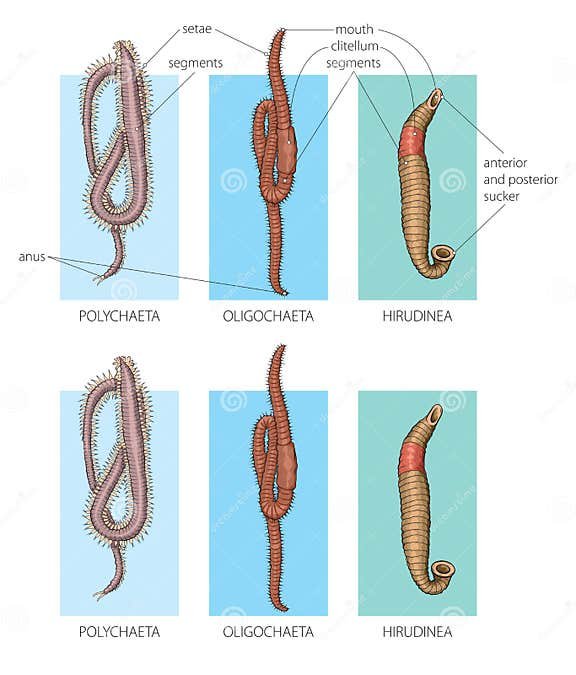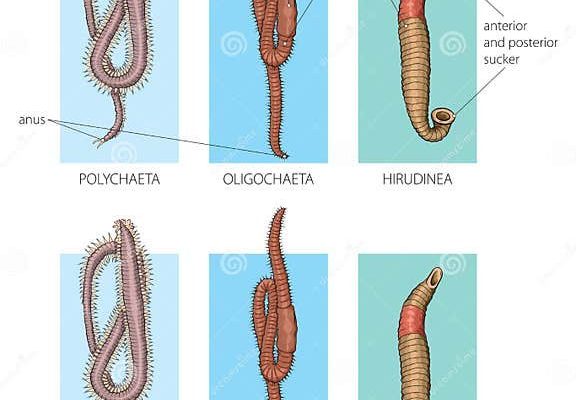
It’s a bit like comparing apples to oranges. Sure, they’re both fruits, but they taste different and have their own unique uses. In the same way, ribbon worms and annelid worms have their own special characteristics. Let’s dive into these fascinating creatures and see how they stack up against each other!
What Are Ribbon Worms?
Ribbon worms, or **Nemertea**, are a diverse group of marine invertebrates that can be found in oceans around the globe. Picture them as the ribbon dancers of the ocean floor: long, flat, and often colorful. They can grow anywhere from just a few centimeters to several meters long! These worms are known for their unique features, such as a **proboscis**, which they use to catch prey. This elongated, tube-like structure can be quite impressive—you might even say it’s like a secret weapon in their arsenal.
One of the most intriguing things about ribbon worms is their **regenerative capabilities**. If they lose a part of their body, they can often regrow it! This ability makes them quite resilient creatures. Ribbon worms live in various habitats, primarily in marine environments, but some can also be found in freshwater or even damp terrestrial areas.
What Are Annelid Worms?
Now, let’s switch gears and talk about **annelid worms**, which belong to the phylum Annelida. You might be more familiar with these little guys, as they include the common earthworm, leeches, and a variety of marine species. Annelids are segmented worms, meaning their bodies are divided into multiple sections or segments. This segmentation offers them increased flexibility and mobility—kind of like how a train can bend and maneuver around tracks.
Annelids play crucial roles in their ecosystems. For example, earthworms are often referred to as nature’s tillers because they aerate the soil, breaking down organic matter and recycling nutrients. These worms come in all shapes and sizes, thriving in different environments, from soil and freshwater to salty oceans.
Body Structure: The Key Differences
One major difference between ribbon worms and annelid worms lies in their **body structure**. Ribbon worms have elongated, flattened bodies that lack segmentation. They seem almost like a single piece of ribbon gliding through the water. In contrast, annelids have a distinct segmented body, which allows for more specialized movement and functionality.
Let’s visualize this a bit. Imagine ribbon worms as smooth, flowing ribbons, while annelids resemble a series of connected beads strung together. Each segment in an annelid can perform specific functions, such as locomotion or reproduction, providing them with a versatility that ribbon worms don’t possess.
Additionally, ribbon worms often have a **soft integument** (or body covering) that lets them easily change shape in the water. Annelids, on the other hand, have a more robust structure due to their segmented nature. This structural difference impacts how each type of worm interacts with its environment and hunts for food.
Feeding Habits and Behavior
When it comes to eating, both ribbon worms and annelid worms have unique strategies. Ribbon worms are predators, often using that fascinating proboscis to capture small prey like crustaceans and other tiny marine animals. They shoot out the proboscis to ensnare their meal, drawing it back to consume. It’s like a game of stealthy capture—one moment they’re gliding along, and the next, they’re dining on a delicious snack!
In contrast, many annelid worms are decomposers. Earthworms, for instance, feed on decaying organic material in the soil, helping to recycle nutrients back into the ecosystem. Others, like certain marine annelids, might scavenge or prey on small organisms. You might say that while ribbon worms are out playing the role of hunters, annelids are more like diligent gardeners, nurturing the environment around them.
Habitat and Distribution
Both ribbon worms and annelids can be found in diverse habitats, but they tend to favor different environments. Ribbon worms are primarily marine creatures and thrive in oceanic habitats, with some species also residing in freshwater or moist terrestrial areas. You often find them hiding in sand or among seaweed. If you ever go tide pooling, keep an eye out for these beautifully colored creatures!
On the other hand, annelid worms have a broader range. They occupy a variety of ecosystems, from rich forest soils to the depths of the ocean. Earthworms, a common type of annelid, are widespread in gardens and fields, while marine annelids might be found in coral reefs or sea bottoms. Their ability to adapt to different environments makes annelids a versatile group.
Reproduction and Life Cycle
Reproduction methods also differ between these two groups. Ribbon worms can reproduce both sexually and asexually, depending on the species. Some can even regenerate lost body parts and may reproduce through fragmentation—that is, when a piece of the worm breaks off and develops into a new individual. It’s quite fascinating to think about how they can create new life!
Annelid worms typically reproduce sexually. Many species have distinct male and female individuals, while some are **hermaphroditic**, possessing both male and female reproductive organs. During mating, two worms will exchange sperm, leading to the development of fertilized eggs that can hatch into young worms. Their life cycles vary widely, but they all contribute to maintaining the health of their respective ecosystems.
Why Does This Matter?
Understanding the differences between ribbon worms and annelid worms isn’t just for biology enthusiasts; it’s essential for anyone interested in ecology or environmental science. Both groups play vital roles in their ecosystems. Ribbon worms contribute to marine food webs, while annelids, especially earthworms, are crucial for soil health and nutrient cycling.
By recognizing these two types of worms and their unique attributes, we can better appreciate the complexity of life beneath the surface. Whether it’s in the garden or the ocean, these creatures remind us that every organism, no matter how small, has an important role to play.
In summary, comparing ribbon worms and annelid worms reveals a world of fascinating differences and similarities. While both groups fall under the broad category of worms, they are distinct in body structure, feeding habits, habitats, and reproduction. It’s like exploring two sides of the same coin.
So, next time you’re out in nature or watching a documentary about marine life, remember the ribbon worms dancing gracefully in the water and the hardworking annelids enriching our soils. Each has its own story, and together, they showcase the beauty and diversity of life on our planet.

